Transportation management and TMS
Logistics
Supply Chain
October 9, 2024

Logistics TMS, for Transport Management System, refers to transport management systems. They are essential tools to best manage your flow of goods.
They are also key tools for achieving productivity, efficiency and cost reduction objectives in the transport sector.
What is a logistics TMS?
A logistics TMS is transport management software that allows you to manage transport flows in a company's supply chain. Mainly intended for carriers and logistics providers, TMS are essential tools. They make it possible to manage a transport fleet and drivers, to organize loading, unloading and delivery schedules and to establish and manage invoicing for the service.
How does a logistics TMS work?
A logistics TMS is a very useful software for transport management at the strategic, tactical and operational level.
It is an activity analysis , offering efficient transport solutions while being adapted to customer constraints. Essential, it allows control over the entire logistics process and it also helps in decision-making for carriers.
Logistics software must make it possible to manage transport activity in its entirety. Thus, at the operational level, it provides access to real-time monitoring, allowing qualitative traceability, with verification of the correct routing of deliveries.
The TMS:
- Collects alert reports,
- Facilitates the issuance and editing of transport purchase orders and invoicing documents,
- Assistance with bookings,
- Facilitates the processing of dispute files.
Why use a logistics TMS?
A company wishing to develop its growth must today look for levers of differentiation. While differentiation through price can be complicated to implement, quality of service and customer satisfaction are key elements to take into account.
TMS software has many advantages such as:
- Logistics performance,
- A reduction in transport costs,
- A gain in productivity,
- Improved customer service,
- Control of environmental impact.
The Transport Management System tool mainly meets the needs for task automation, traceability of goods and deliveries, and optimization of processes and means of delivery by carriers. It also allows excellent management of the heavy goods vehicle fleet.
Using TMS software means standardizing, clarifying and restoring this information. With accessible, reliable and precise information, updated in real time, delivery priorities, multimodal transport, shortages and constraints linked to export are thus managed. It is a tool that offers a better vision of the entire activity, thus making it possible to identify problems and remedy them at the very moment they arise.
In a process of continuous improvement and thanks to the reporting established to monitor and analyze the strengths and weaknesses of the transport function, the TMS makes it possible to implement new measures aimed at improving business performance. Indeed, thanks to integrated reporting tools, the logistics TMS makes it possible to automatically generate performance indicators such as logistics KPIs. Companies thus have the capacity to control compliance with delivery times, the filling rate of trucks, the occupancy rate of means of transport, CO2 emissions, etc. They may also implement corrective or additional measures to improve this performance.
All of this is therefore established with a view to reducing delays, costs and improving quality.
The EGO WMS suite and the logistics TMS
EGO is a WMS integrating interface tools with the logistics TMS in its functionalities . A true “logistics ERP”, EGO allows:
- Inventory management within one or more warehouses,
- Supply management,
- The conditioning,
- Piloting and managing physical flows,
- warehousing,
- Integration with an e-commerce site solution…
In short, EGO integrates TMS functionalities into “Supply Chain management”, making it possible to manage the entire supply chain in order to optimize its operation and profitability.
Carrier appointment booking functionalities have been developed to optimize dock unloading operations. On reception, the EGO WMS can generate, by interfacing with a TMS, a confirmation of receipt. When preparing a customer order, EGO can generate transport orders and has algorithms for assigning “routes” to carriers (chartering management), based on predefined constraints (weight, volumes , prices, etc.).
This module also offers WMS interfacing locally or via webservices and API to the main messaging operators (Chronopost, DPD, Geodis, DHL, Colissimo, etc.), in particular to generate carrier labels (position) at the end of preparation of orders.
Finally, EGO generates all the necessary documentary elements (delivery note, packing list, etc.) given to the carrier.
Most read articles
Logistics
Supply Chain
June 10, 2024
Reverse logistics: our management of product returns
Reverse logistics, or reverse logistics, is a management process that focuses on returning products from the consumer to the manufacturer or distributor.
WMS software
Logistics
Supply Chain
July 3, 2024
Inventory management using WMS software
To master your inventory management, it is imperative to use suitable and efficient inventory management software. With this automation, you can monitor the status of your inventory in real time, allowing you to make informed and rapid decisions to avoid stock-outs or overstocks.
WMS software
Logistics
Supply Chain
October 4, 2024
What is a Warehouse Management System (WMS)?
In today's complex world of logistics, a WMS is key to optimizing warehouse operations, improving efficiency and reducing costs. With its advanced features, it helps meet logistics requirements by offering an efficient solution for managing the movement and storage of products within warehouses.

















